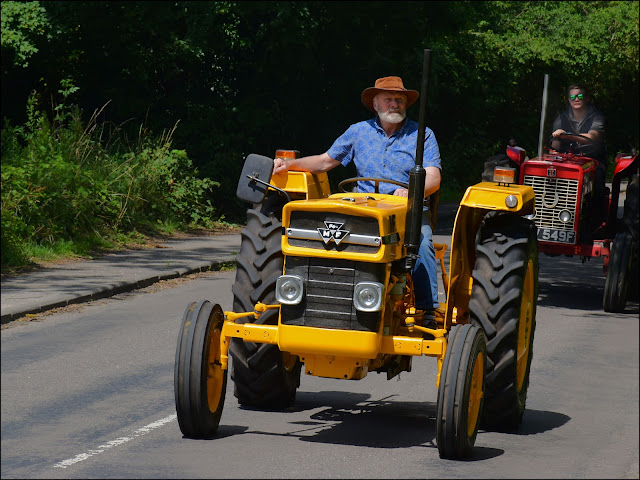Lynford Hall was once the centre of a large estate, but nowadays the Hall operates as a hotel and much of the surrounding land is managed by the Forestry Commission. It's a popular area for walkers. Lets go and see why.
The Forestry Commission was founded by the government in 1919, when it was realised that the country needed to be self-sufficient in timber during times of conflict. The major problem faced during the First World War was a shortage of pit-props for the coal mines. Nowadays the woods and forests of the land are managed for recreation and wildlife as well as timber production.
The other big landowner around here are the military. Step over that fence on the left of the above photo and you're in danger of being blown up by unexploded weapons! The Stanford Training Area was set up in 1942 and occupies around 30,000 acres (12,000 hectares). Half a dozen deserted villages lie within its boundaries - and even a full scale Afghan village, including a mosque, which was built in 2009 to train troops for the war in that country.
As you wander through the forested area you frequently come across isolated dwellings. These were once the farmhouses and gamekeepers' cottages, many of which were associated with the old estates. Some still have a few fields and meadows around them and others are occupied by forestry workers.
Rather grander is Lynford Hall itself, which was built in the late nineteenth century for Mr Stephens Lyne-Stephens, who was at that time said to be the richest commoner in the land. In the 1920s the building was seriously damaged by fire: if you look closely you can see that the top floor windows are not dormers at all but just window-frames left standing proud of the roof by subsequent repairs.
Swans still glide among the lily-pads on the ornamental lake and there's a leafy public path running alongside.
The Hall gardens must have once been magnificent and twentieth century guests included Joe Kennedy Snr, who was then the US Ambassador, and his three sons Joe Jnr, Robert and John; and also Ernest Hemingway.
You can walk down an avenue of Giant Sequoia or Redwood trees...
...in Britain they are still often called Wellingtonias, which was the name initially proposed for them by botanists shortly after their discovery.
Leading south from the Hall are several paths through the forested areas - nice shady walking on a warm, sunny day. Often the paths are lined with a mixture of trees which screens the commercial forestry taking place behind it.
Occasionally paths are closed because of forestry operations, but usually you can take an alternative path to get to your destination.
Bracken can often take hold along the path edges. It's one of the few plants that always looks prettier in photographs than it does in reality.
Many of the paths converge on Lynford Stag picnic site, where many families gather on summer afternoons, there being a main road right alongside. Closer inspection reveals that the Stag himself is made of iron; he was found nearby by forestry workers and was renovated and set up here. It was formerly used as a target by huntsmen. One wonders if Hemingway ever took any pot-shots at it.
We then faced a trudge back through the forest, but you don't need to do that. I can whisk you back to the fields surrounding the Hall which are full of wild flowers at this time of year.
This is Meadow Sweet, also known by a wide variety of folk names such as Queen of the Meadow, Pride of the Meadow, New-mown-hay, Meadow-wort, Meadow Queen, Lady of the Meadow, Dollof, Bitter-sweet, Meadsweet and Bridewort. It's a familiar plant of wet meadows and was used as a folk medicine to cure rheumatism, ague and other disorders. The reasoning behind this was that it thrived in damp places and therefore must be able to cure diseases that were caught there. Rather silly.....ah, but it worked!
Along with willow (another plant of wet environments) it was found to contain useful medicinal substances which, once they were extracted, made a drug called Aspirin, which gets its name from spiraea ulmaria, the old botanical name for Meadow Sweet.
Yesterday was a grand day for butterflies. Large White, Peacock, Brimstone, Comma, Tortoiseshell, Red Admiral, Gatekeeper, Brown Argus and Meadow Brown were all abundant. And most of them were represented on the unusual dark Buddleia bush growing near the Hall. Above are a couple of Red Admirals.
Take care


















































